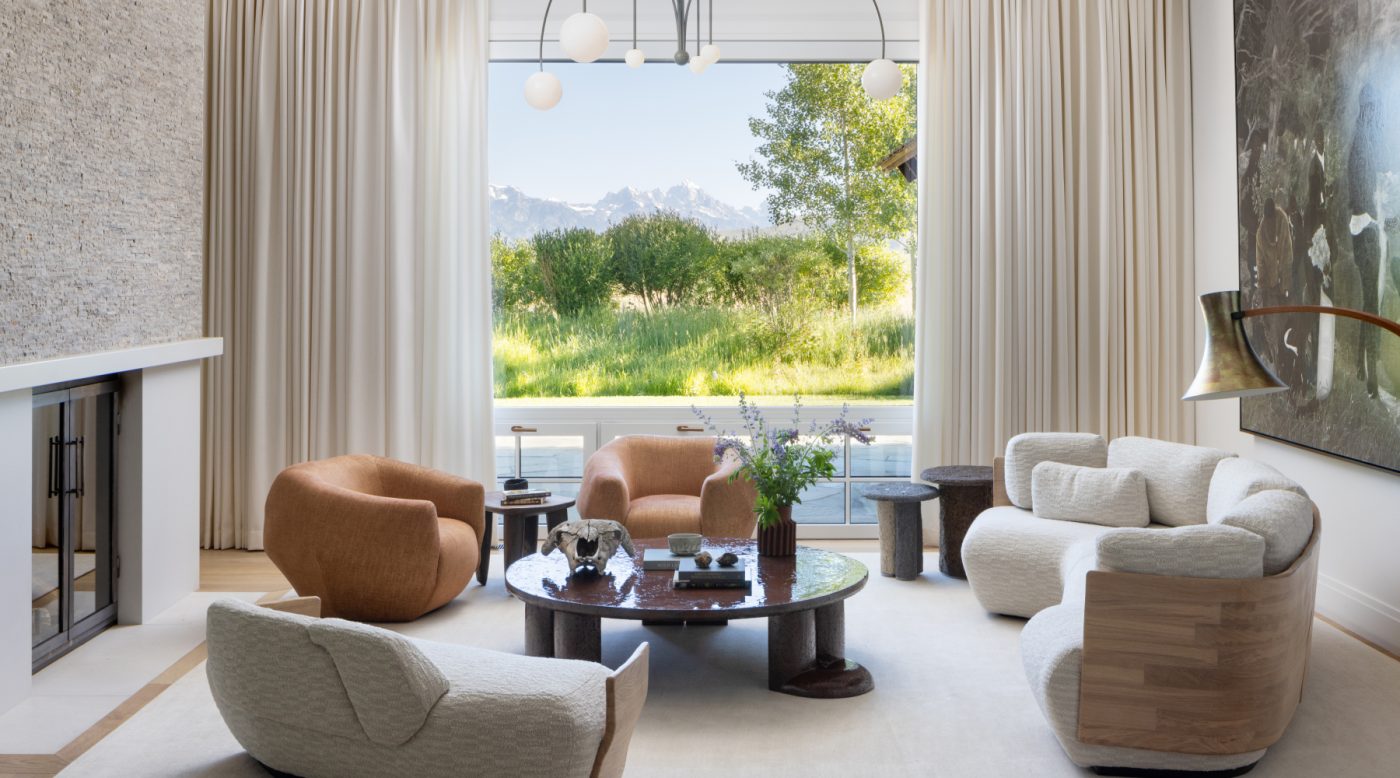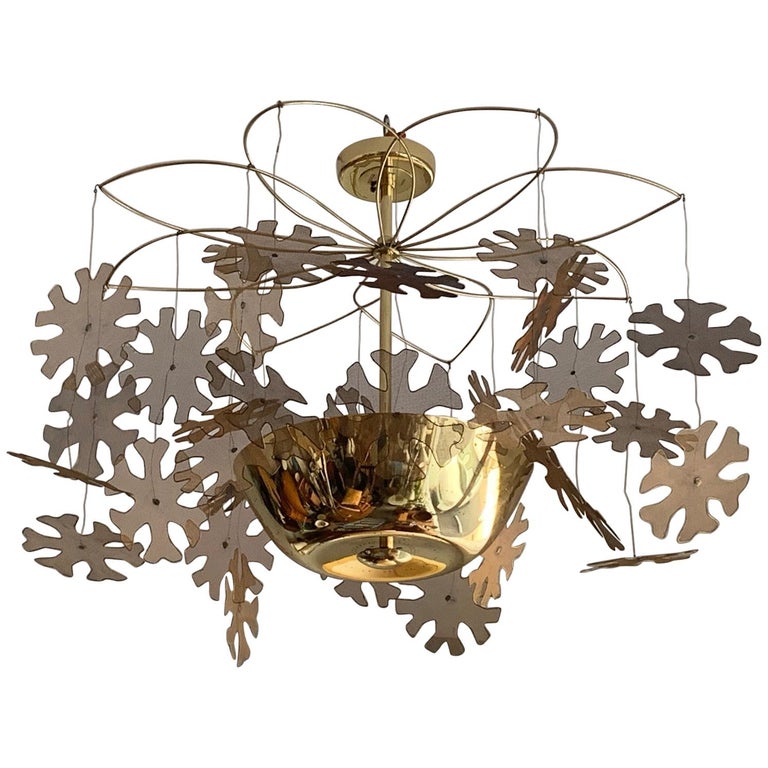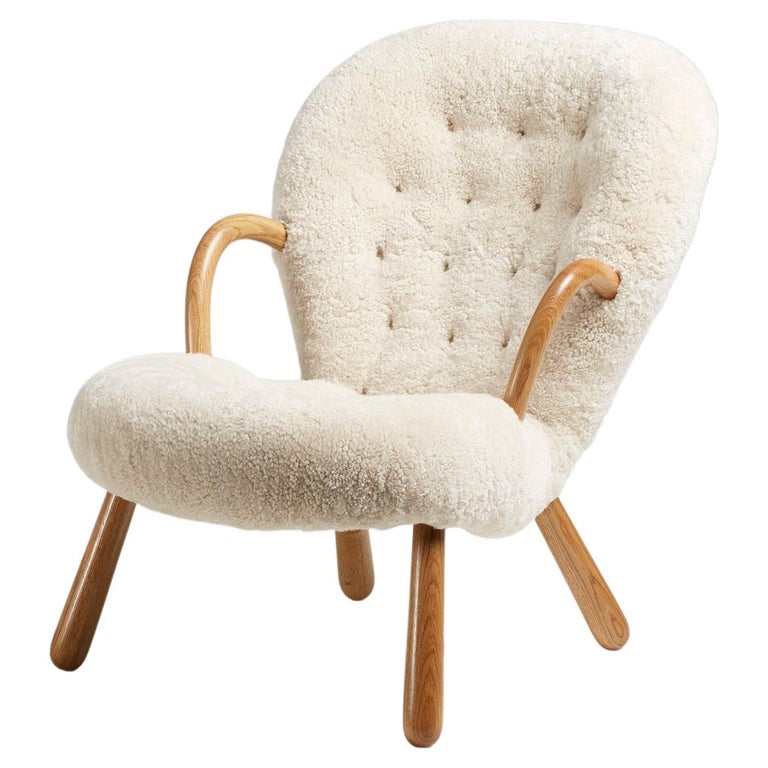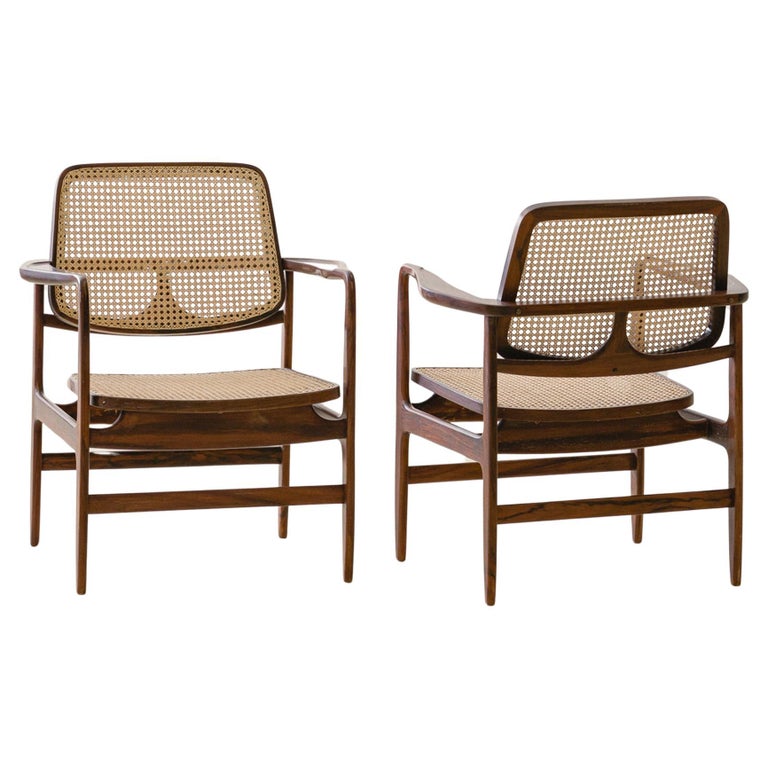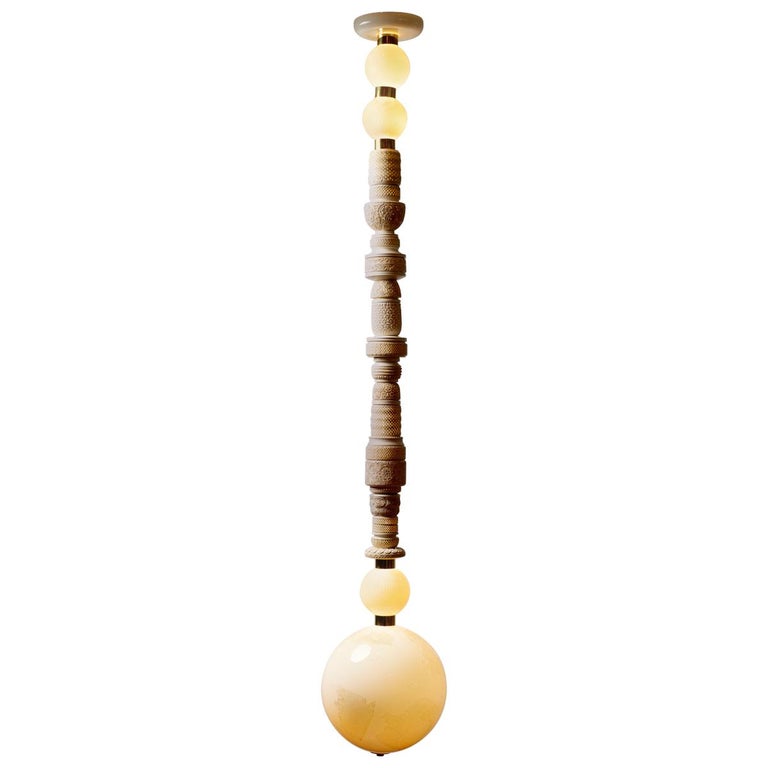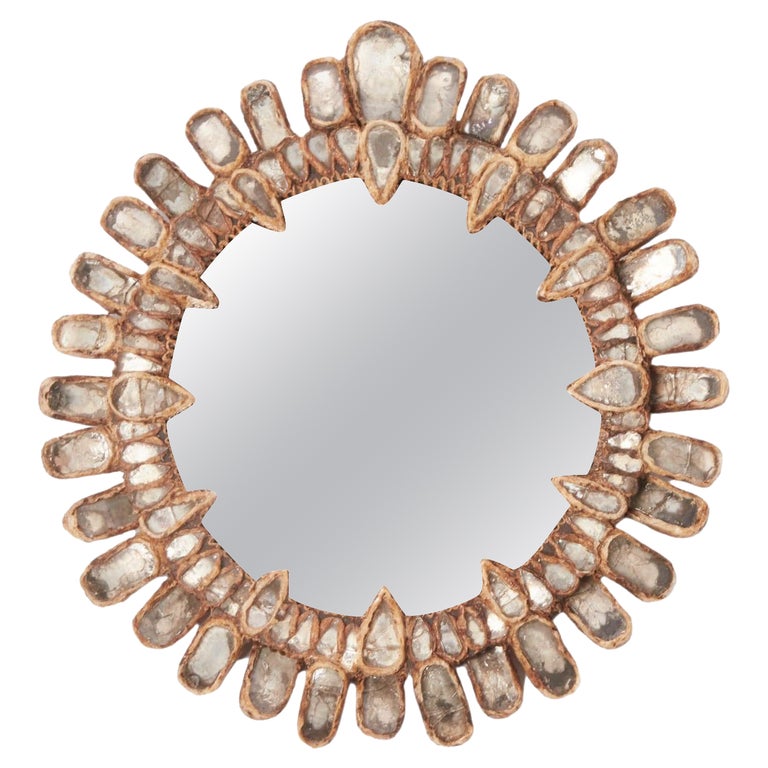September 28, 2025Valerie Peña’s logo baseball cap is brown, her umbrella is turquoise, and the dull rain streaking the West Village sidewalk around her is so insistent that she ducks beneath some scaffolding to pick up a journalist’s video call. “Sorry, I was supposed to be done an hour ago, but my contractors had a million issues on site,” she says, pushing her brim up. “This will just have to be my office. Give me two seconds.”
Peña, 36, moved to New York City 12 years ago after studying design in Madrid following graduation from college in her native Dominican Republic, where her mother ran a shop fabricating window treatments. In New York, she further honed her skills at Parsons, then assisted a short list of talented designers, including Nicole Fuller, who became a mentor.
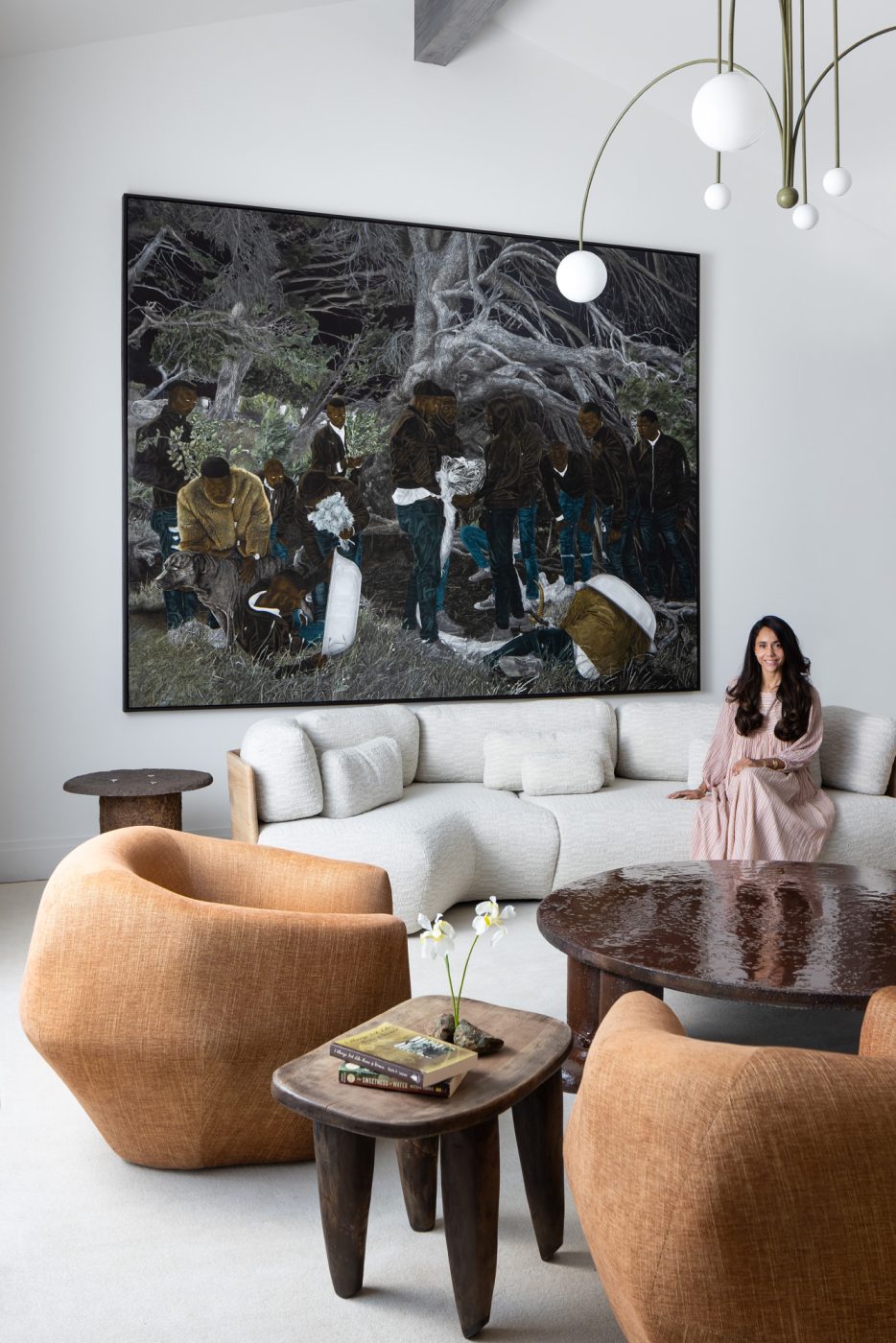
Even with that background, Peña’s rise wasn’t easy. “I’m not rooted in New York, I’m an immigrant,” she says. “You work hard, and nothing happens. And then one day, something happened.”
A few years ago, a lengthy apartment renovation she did with Fuller went well, and Peña and the building’s superintendent became tight. When a new tenant was looking for a designer, he had her back. “He’s like, ‘There’s this girl named Val. She works really hard, here’s her number,’ ” Peña says, laughing. That tenant was Christine Mastro, who’s since enlisted Peña for four projects — including the Jackson Hole home published here for the first time.
“Now, I have an office and staff, and I’m just the luckiest girl on the planet,” Peña says with a smile. “I don’t know how it happened.”
Gallerist Cristina Grajales, who has sold Peña’s clients vintage and contemporary art and furniture, credits the designer’s success to her restless, exuberant eye. “Val is expansive in the way she sees interiors,” Grajales says. “She’s not buying what everybody’s buying. She’s following her heart, and that is unusual.”
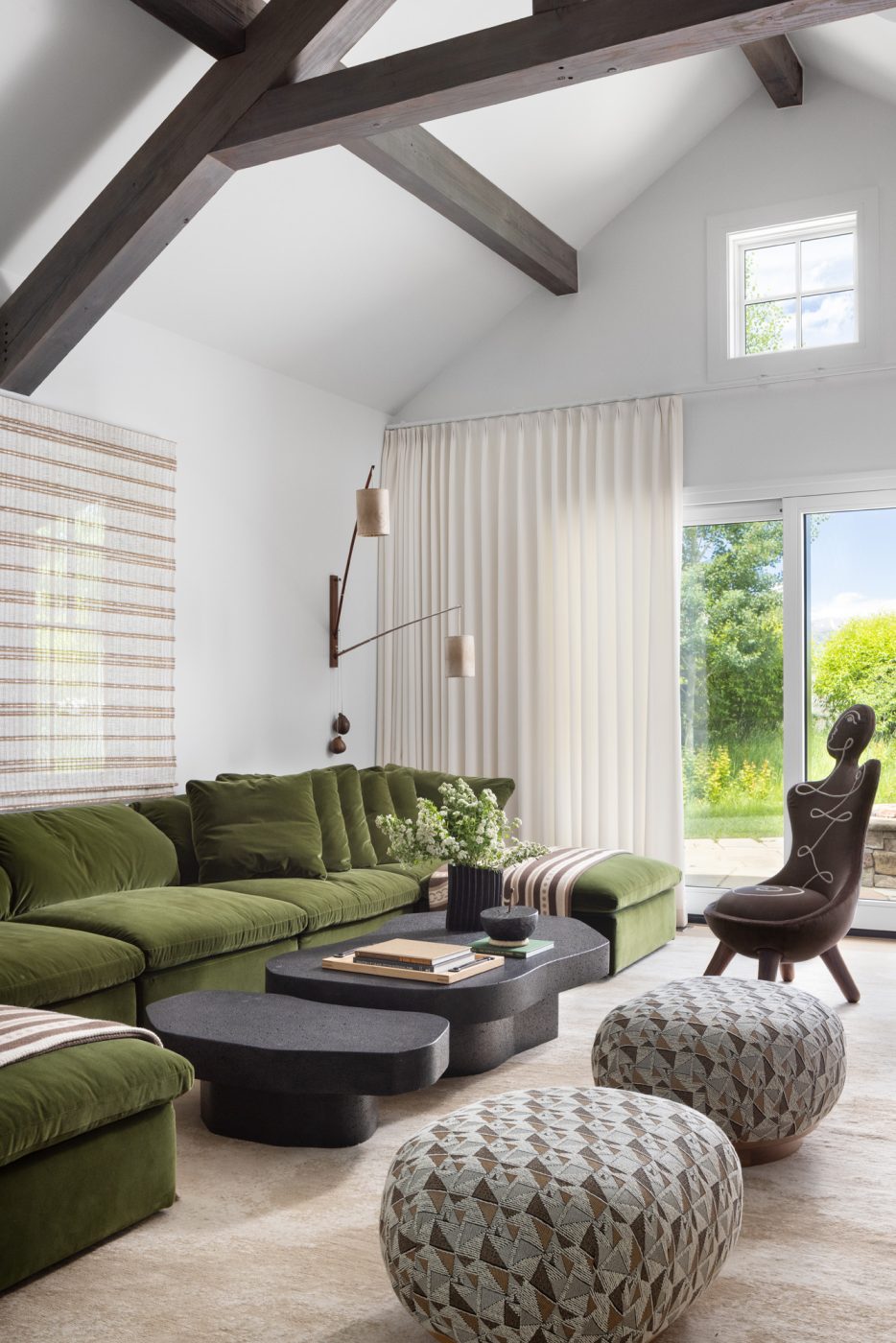
Mastro — who, together with her husband and their children, splits her time between New York and Jackson Hole — appreciates Peña’s professionalism and dedication as much as her ability to deliver exactly what the family wanted: interiors that brought the spectacle of the Grand Tetons and the somber beauty of the surrounding hill country straight into the three-bedroom, new-build house.
Mastro preferred not to change the existing structure, despite the layout’s lack of nuance. But Peña saw possibilities in the home’s high ceilings and selective use of weathered barn siding, which gave the single-story structure some earthbound nobility.
Wyoming was new to Peña, as was the American West. But the idea of drawing forms and materiality from the landscape was as familiar as her earliest memories of Dominican beaches and rainforests. Her client, she says, wanted “something distinct from the typical Jackson ranch aesthetic — still connected to place but more sophisticated. No antlers. We focused on balance and warmth, refining every room to create a space that feels inviting yet elevated.”
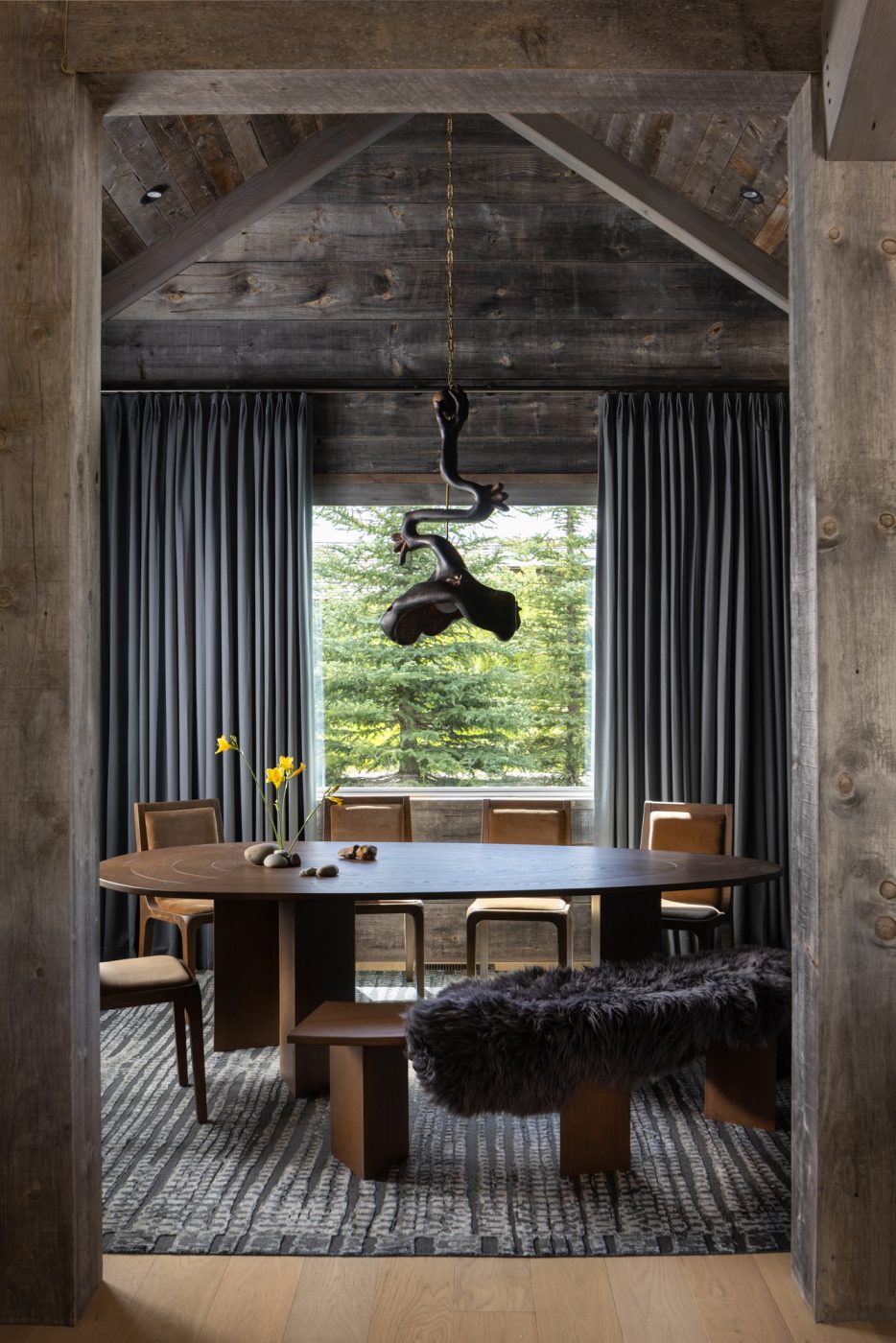
Central to her inspiration were the new-rustic furnishings of designers Pierre Yovanovitch and Giancarlo Valle, both reference points as the project came together. Yovanovitch — whose sculptural wood pieces are informed by his experience living in a home set amidst the alpine peaks and forested ridges of France’s Haut-Var — is represented by a pair of Asymmetry chairs that ground the living room like stone cairns. Ian Felton’s hand-carved and glazed lava-stone Mullunu table, a 1stDibs find, is a flinty companion.
Mounted over the sofa, a darkly surreal painting by Cape Town–based artist Cinga Samson — a star of the couple’s far-reaching contemporary-art collection — all but dominates the room. Peña finds it unsettling but undeniably powerful.
The mood lightens in the den thanks to Vincent Darré’s droll, inviting, anthropomorphic Télémaque Conversation chair, its name a reference to Odysseus’s son Telemachus and its form to the fashionable, ground-sweeping parlor chairs of ancien-régime France. Peña imagines the figure suggested by the chair glancing over its shoulder at the Tetons. Maybe rallying everyone for a climb?
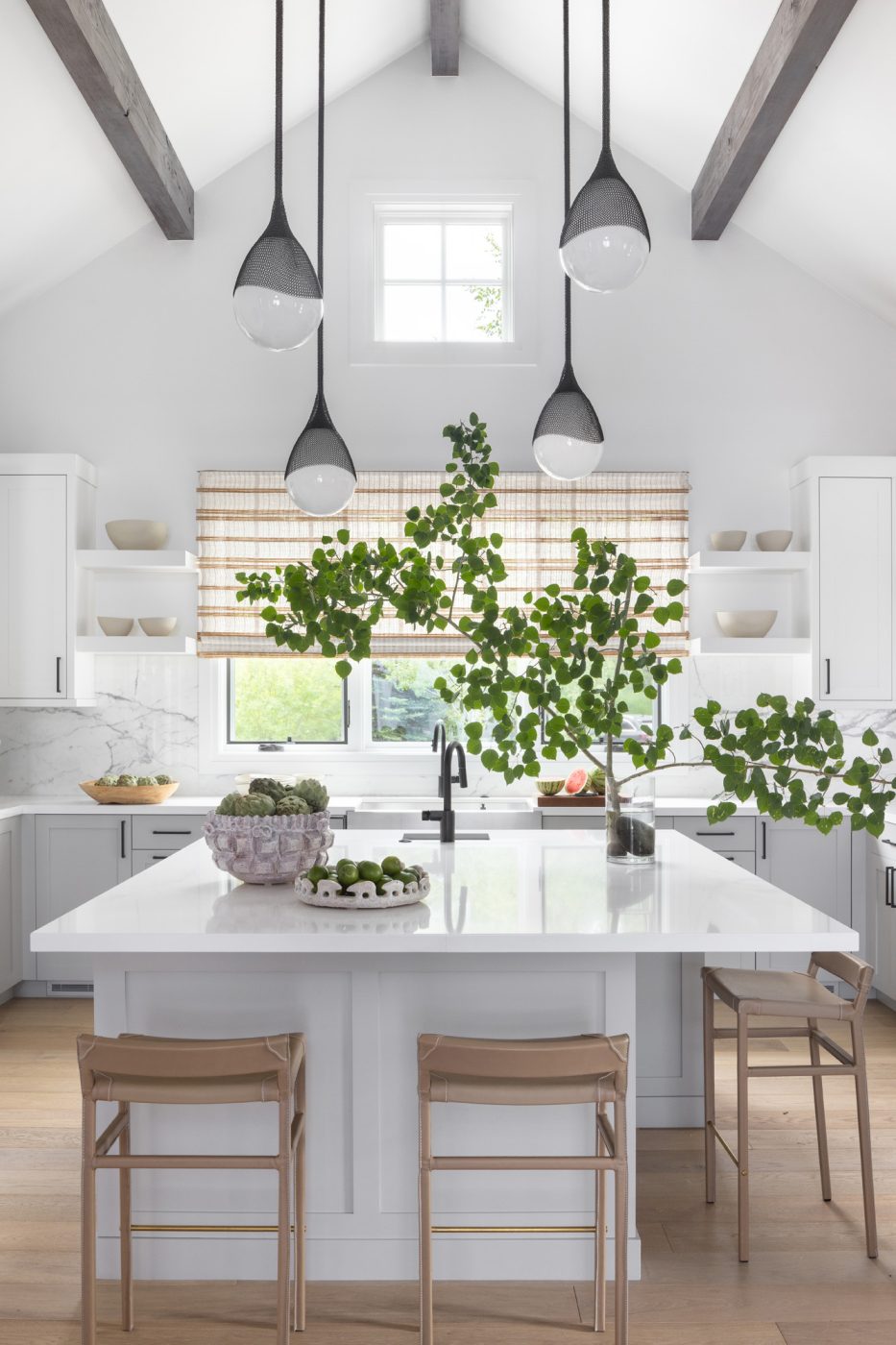
Another local pastime, fly-fishing, gets a subliminal nod in vintage jib-style swing-arm wall lights by Rupprecht Skrip acquired through 1stDibs. Nearby is a two-part lava-stone table, made by artisans in Mexico, fronted by two pebble-shaped custom ottomans wrapped in an intricately-patterned Élitis weave.
Peña insists that any piece of furniture, and any room, can be improved with the artful deployment of well-chosen fabrics. (“I cannot do inexpensive fabric,” she says, no doubt the influence of her mother’s textile expertise.) The dining room proves her point. Covering Roman and Williams Guild’s Stockholm Coupe dining chairs with a chamois velvet, throwing a sheepskin over a curved bench and running a painterly wool-and-silk carpet underfoot go a long way toward elevating a room previously overdefined by its rugged wood paneling. In the midst of all this, Vincent Poscik’s sculptural pendant light snakes suggestively down from the ceiling.
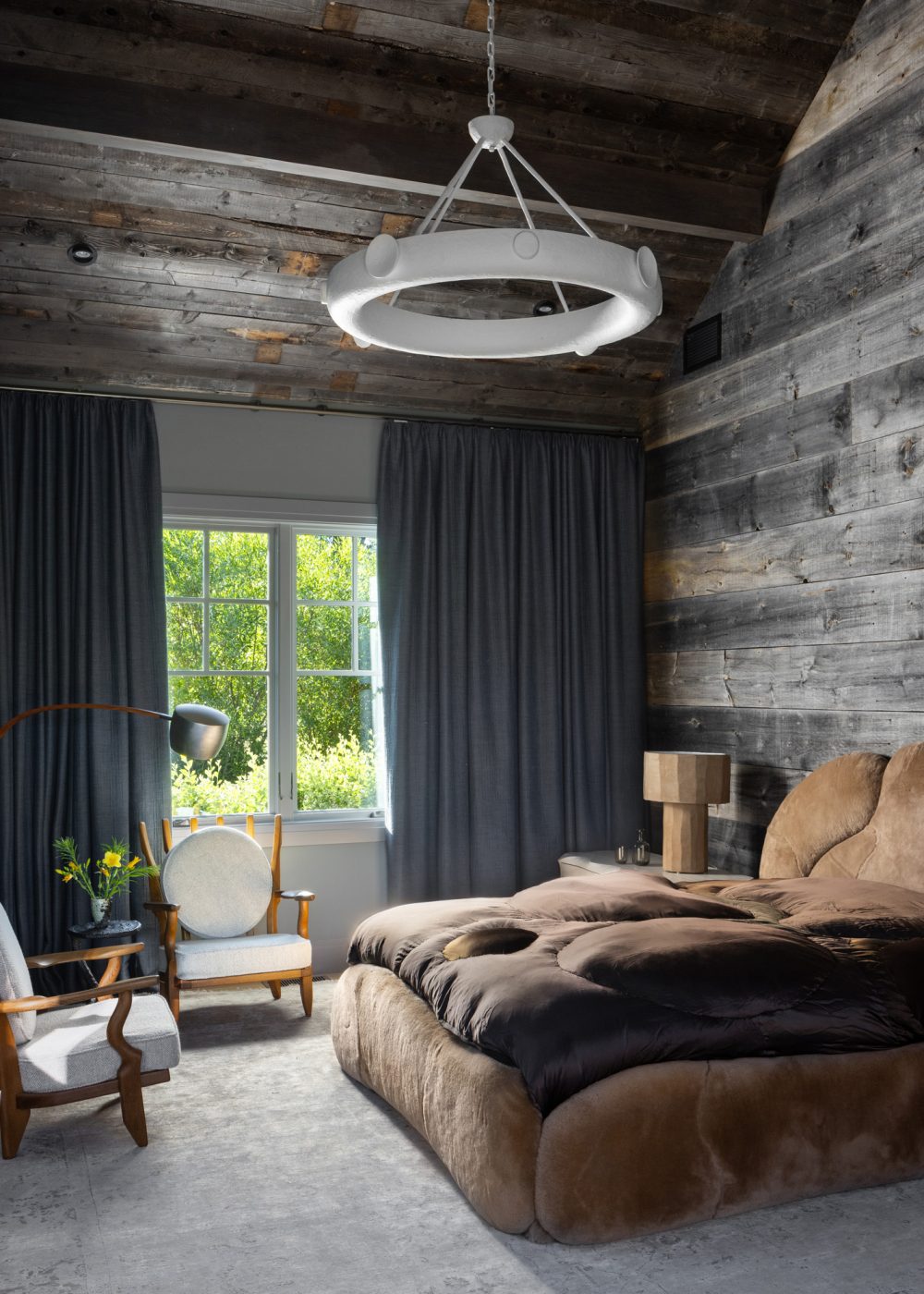
Peña and her client made another bold move in the primary bedroom, commissioning a louche bed from Los Angeles designer Rogan Gregory unlike any he’d previously produced. “With Chris, everything is customized,” says Peña, who sold Mastro on a sketch and suggested buffalo-colored shearling to wrap the bedframe. Gregory was ecstatic. “And then, after, he made a coordinating custom blanket for us,” she adds slyly. Working within the same playful idiom are a pair of custom nightstands by Caleb Woodard and two Guillerme et Chambron lounge chairs from 1stDibs.
By now the rain has stopped, and Peña needs to get back to her office, though she’s still wired from her earlier job-site visit.
That project — the one with a million issues — is a sprawling duplex penthouse, and she’s totally ready to ace it. In fact, she’s been ready for a while.
“In high school, I was always put in charge of the decoration committee,” she says, closing her umbrella. “It was very unanimous that I should become a decorator.”
